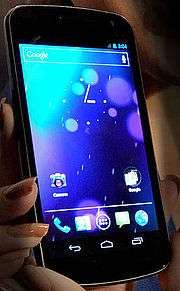Hacking of consumer electronics
The hacking of consumer electronics is an increasingly common practice which users perform in order to customize and modify their devices beyond what is typically possible. This activity has a long history, dating from the days of early computer, programming, and electronics hobbyists. The most notable case of the hacking of consumer electronics is jailbreaking of Apple iOS devices or the rooting of Android phones, although many other electronics such as video game consoles are regularly hacked.
Devices
=Smartphones
Hardware device removal
Whistleblower Edward Snowden showed Wired correspondent Shane Smith how to remove the cameras and microphones from a smartphone.[1]
Smartphone operating systems
- Firefox OS
- Windows Phone
- Samsung
- Tekno
- Apple iOS (jailbreaking)
- Google Android (root)
- Palm webOS (dev mode)
- Symbian OS (executing unsigned code) first
- Jio phone whatsapp|url=https://www.wired.com/2016/05/snowden-vice-cell-phone-hack/ |website=Wired |date=26 May 2016}}</ref>
Smartphone operating systems
- Firefox OS
- Windows Phone
- Samsung
- Tekno
- Apple iOS (jailbreaking)
- Google Android (root)
- Palm webOS (dev mode)
- Symbian OS (executing unsigned code) first
- Jio phone whatsapp
Multimedia devices and video game systems
- Microsoft
- Nintendo
- Gamecube
- Game Boy Advance
- Nintendo DS
- Nintendo 3DS (Homebrew)
- Wii
- Wii homebrew
- Wii U
- Nintendo Switch
- Sony
- Others
- TiVo
- DVD player - to remove regional restrictions, user operation prohibition flag (fast forward disabled in advertising clip etc.) and Macrovision (video copy is flashing after copying to protect analog hole)
- Blu-ray players - to remove regional restrictions
- Any non-smart mobile phone. To remove operator lock or SIM lock restriction.
Other devices
- Graphing calculators
- Video cards[2]
- Routers
- Oscilloscopes[3]
- Thermographic cameras[4]
- GPS devices[5]
- Canon Digital cameras
- Nikon Digital cameras [6].
- Vivo v7+ v1716
Devices allowing for hacking

Some devices—most commonly open source—are built for homebrew purposes, and encourage hacking as an integral part of their existence.
- Pandora (console)Tahor
- Samsung
- Tekno
- Chumby
- Ouya
- Nokia N900
- Android Dev Phone
- Nexus One
- Nexus S
- Galaxy Nexus, currently one of the phones recommended by the Android Open Source Project for software development[8]
- ZTE Open
- Many wireless routers' firmware upgrade functions are not limited to accepting updates that have been signed by the device's manufacturer. As a result, open-source firmware replacements have been created for many devices, such as OpenWrt and DD-WRT.
Legality
iOS jailbreaking was often considered illegal in the United States until a recent ruling by the U.S. Copyright Office declaring that jailbreaking an iPhone or other mobile device would no longer violate copyright law.[9] However, simultaneously, there is ongoing prosecution against hackers of videogame consoles under anti-circumvention violations of the DMCA. A main complication, in many cases, is the profiting from selling jailbroken or rooted equipment as a value-added service. At least some accused deny these charges and claim only to be making back-ups of legally purchased games.[10][11]
Recently, the High-bandwidth Digital Content Protection encryption system, which encrypts data running between cable boxes, Blu-ray players, and other similar devices and displays was cracked, and a copy of the master key needed to decrypt HDCP protected streams was posted on the internet. Intel, which created and now licenses HDCP technology, has stated that HDCP protection is sufficient to keep most users from circumventing it, but indicated that it may threaten legal action against more determined users under the DMCA.[12]
On the issue of the hacking of its new interactive game controller the Kinect, Microsoft initially condemned and threatened legal action against those who hacked it, but soon after it reversed this position and instead stated that it had intentionally left the device open, and would in fact not prosecute those who modified it.[13]
See also
- Electronics right to repair
- iOS jailbreaking
- Rooting (Android OS)
- Symbian OS Security bypass
- Xbox modchips
- List of open source hardware projects
- Privilege escalation
- Unsigned code
References
- Watercutter, Angela (26 May 2016). "Watch Edward Snowden Teach Vice How to Make a Phone 'Go Black'". Wired.
- "Tweaker Turns GeForce GTX 690 Into a Quadro K5000". 23 March 2013.
- "Hacking the Rigol DS1052E Oscilloscope with Linux".
- "Manufacturer-Crippled Flir E4 Thermal Camera Hacked to Perform as High-End Model".
- "Hacking Your GPS Firmware - ExtremeTech". 29 March 2005.
- "Nikon Hacker • Portal".
- Kralevich, Nick (2010-12-20). "Android Developers Blog: It's not i"rooting", it's openness". Android-developers.blogspot.com. Retrieved 2011-11-27.
- http://source.android.com/source/building-devices.html
- German, Kent. "On Call: Go ahead and jailbreak, it's legal now | Dialed In — CNET Blogs". Cnet.com. Retrieved 2010-12-11.
- "Famed Xbox hacker wants to testify in Xbox 360 modder's DMCA trial – Video Games Reviews, Cheats". Geek.com. Retrieved 2010-12-11.
- Previous post Next post (2009-08-04). "Student Arrested for Jailbreaking Game Consoles — Update | Threat Level". Wired.com. Retrieved 2010-12-11.
- Bright, Peter (2010-09-17). "Intel confirms HDCP key is real, can now be broken at will". Arstechnica.com. Retrieved 2010-12-11.
- Murphy, David (2010-11-20). "Microsoft: We Left Kinect's USB Port Unprotected on Purpose". PCMag.com. Retrieved 2010-12-11.